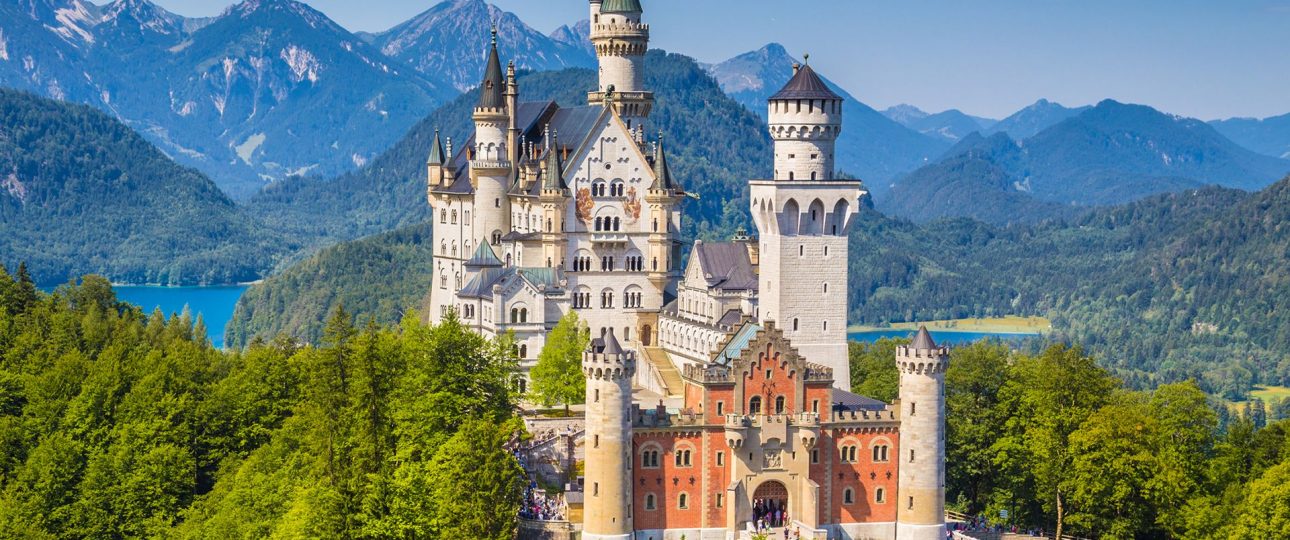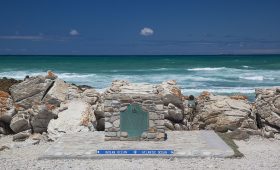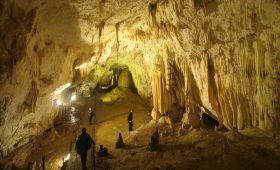About Neuschwanstein Castle
Neuschwanstein Castle, located in the Bavarian Alps of Germany, is a stunning example of 19th-century Romanesque Revival architecture. This iconic structure, commissioned by King Ludwig II of Bavaria, is renowned for its picturesque setting and historical significance.
History and Architecture
Neuschwanstein Castle was conceived by King Ludwig II as a personal retreat and homage to the operas of Richard Wagner, whom he greatly admired. The design was drafted by stage designer Christian Jank and realized by architect Eduard Riedel. Construction began in 1869, replacing the ruins of the medieval Hohenschwangau Castles. The castle’s design draws from the Romanticist interpretation of the Middle Ages, with influences from Nuremberg Castle and the Château de Pierrefonds.
Perched on a rugged hill, Neuschwanstein offers breathtaking views of the surrounding Bavarian landscape, including the Alpsee and Schwansee lakes. Its white limestone facade, towers, and turrets create a dramatic silhouette against the backdrop of the Alps.
Unique Features
The interior of Neuschwanstein Castle is as impressive as its exterior. The lavish rooms feature intricate woodcarvings, murals, and frescoes. The Throne Room, adorned with golden decorations and a magnificent chandelier, reflects the opulence of the Bavarian monarchy. The Singers’ Hall, inspired by Wagner’s opera “Tannhäuser,” is a highlight for music enthusiasts, showcasing the king’s passion for Wagnerian themes.
Best Time to Visit
Visiting Neuschwanstein Castle is most enjoyable during the spring and autumn months. These shoulder seasons offer pleasant weather and fewer crowds compared to the bustling summer months. To avoid long queues, it’s wise to book tickets in advance. Guided tours are available in multiple languages, providing valuable insights into the castle’s history and architecture.
How to Get There
Neuschwanstein Castle is situated near the village of Hohenschwangau, close to Füssen in southwest Bavaria. Here are some travel options:
By Air:
- The nearest international airport is Munich Airport, approximately 130 kilometers from the castle.
- From the airport, travelers can take a train or rent a car to reach Füssen. From there, regular buses and taxis are available to transport visitors to the castle.
By Train:
- Füssen is well-connected by train to major cities in Germany and neighboring countries.
- From Füssen, a bus or taxi can take you directly to Neuschwanstein Castle.
Local Transportation
Once in Hohenschwangau or Füssen, several transportation options are available to reach Neuschwanstein Castle:
By Bus:
- Regular buses operate between Hohenschwangau and Neuschwanstein Castle, with a journey time of about 10 minutes. Tickets can be purchased on-site.
By Car:
- Parking facilities are available near the castle, but spaces can fill up quickly during peak tourist seasons. Arriving early is recommended.




